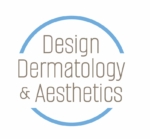About Ultherapy
What is it?
Ultherapy is an FDA-approved skin tightening treatment that uses ultrasound energy to rejuvenate, tone, and refresh the skin. This ultrasound energy strengthens your skin’s framework and stimulates new collagen, providing you with a refreshed and brightened appearance. And since ultrasound technology gives a precise visualization of the targeted area, treatment is precise and efficient.
What to expect
Ultherapy tightens skin on your face, brow, neck, and even chest (breast) for a lifted rejuvenated appearance. Our expert practitioners are skilled and experienced at performing this non-invasive therapy for loose, sagging skin. A single treatment session typically takes about a half hour, while a combination treatment (e.g., face and neck) could take 90 minutes. One session is often enough, but depending on the laxity of your skin as well as your specific aesthetic goals, you may need several sessions.
After the procedure
The results from Ultherapy are gradual and natural-looking. Though there is a possibility of side effects, they are often mild and temporary, ranging from swelling and redness to tenderness or tingling for 5-7 days. Furthermore, results can vary from patient to patient, but most individuals notice an improvement within 1-3 months after treatment, with full effects being noticeable after 5-6 months. We recommend treatment sessions every 12-18 months to keep your skin looking healthy and refreshed!
Our approach & expertise
We know that saggy skin on your face or neck can have a negative impact on your appearance and self-esteem, so our skin experts are here to provide treatment options. Our compassionate staff will tailor a treatment plan unique to your particular condition, address any concerns you may have, and answer all of your questions throughout the treatment process. Here at Design Derm, we take all of your skincare concerns as a priority, and we will stop at nothing to provide the expert care that you deserve.
Schedule your appointment now.

